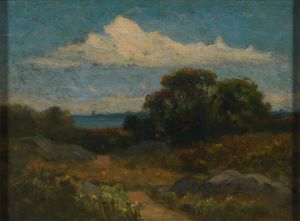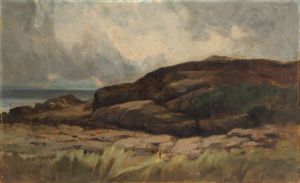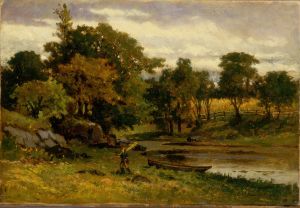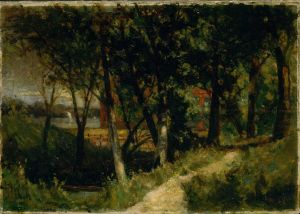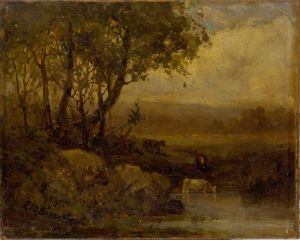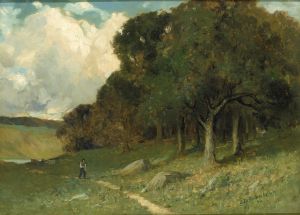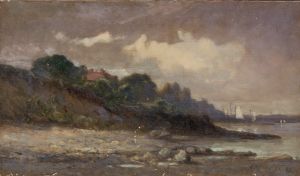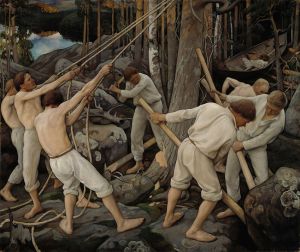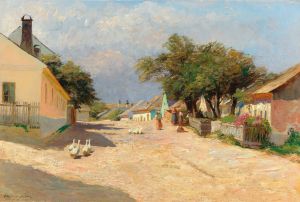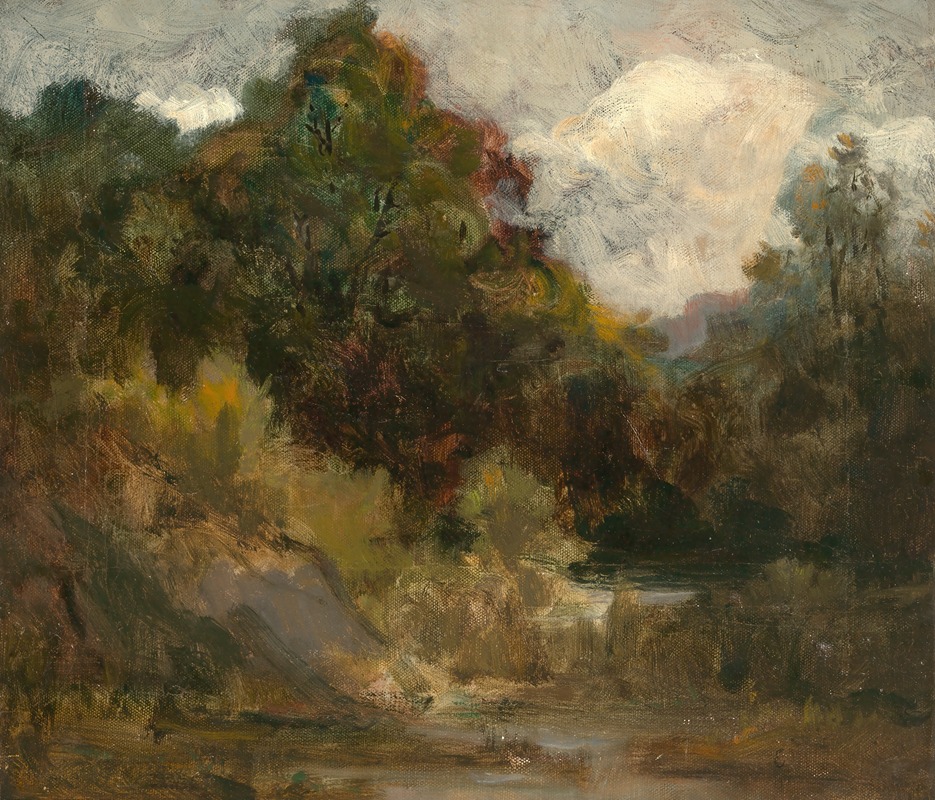
Landscape .
A hand-painted replica of Edward Mitchell Bannister’s masterpiece Landscape ., meticulously crafted by professional artists to capture the true essence of the original. Each piece is created with museum-quality canvas and rare mineral pigments, carefully painted by experienced artists with delicate brushstrokes and rich, layered colors to perfectly recreate the texture of the original artwork. Unlike machine-printed reproductions, this hand-painted version brings the painting to life, infused with the artist’s emotions and skill in every stroke. Whether for personal collection or home decoration, it instantly elevates the artistic atmosphere of any space.
Edward Mitchell Bannister (1828-1901) was a prominent African American artist known for his contributions to the American art scene in the 19th century. Born in St. Andrews, New Brunswick, Canada, Bannister moved to Boston, Massachusetts, where he developed his artistic skills and became an influential figure in the art community. His work is often associated with the Barbizon school of painting, which emphasized naturalism and the depiction of rural landscapes.
One of Bannister's notable works is "Landscape," a painting that exemplifies his mastery in capturing the serene beauty of nature. Although specific details about the creation date and exact location depicted in "Landscape" are not well-documented, the painting is celebrated for its atmospheric quality and the artist's ability to convey the tranquility of the natural world.
"Landscape" showcases Bannister's adept use of light and shadow, creating a sense of depth and dimension in the scene. The painting typically features a harmonious composition of trees, water, and sky, rendered with a soft, almost ethereal touch. Bannister's brushwork is characterized by its fluidity and subtlety, allowing the viewer to feel immersed in the peaceful environment he portrays.
Bannister's work was groundbreaking not only for its artistic merit but also for its cultural significance. As an African American artist in the 19th century, Bannister faced considerable racial prejudice and barriers within the art world. Despite these challenges, he achieved recognition and success, particularly after winning a bronze medal at the 1876 Philadelphia Centennial Exposition for his painting "Under the Oaks." This accolade helped to elevate his status and secure his place in American art history.
"Landscape" reflects Bannister's deep appreciation for nature and his commitment to depicting it with authenticity and reverence. His landscapes often evoke a sense of calm and introspection, inviting viewers to pause and appreciate the beauty of the natural world. Bannister's ability to capture the subtleties of light and atmosphere demonstrates his keen observational skills and his dedication to his craft.
Today, Edward Mitchell Bannister's works, including "Landscape," are held in various public and private collections, and he is remembered as a pioneering figure in American art. His legacy continues to inspire future generations of artists, particularly those from marginalized communities, to pursue their creative passions and overcome societal obstacles.
In summary, Edward Mitchell Bannister's "Landscape" is a testament to his talent and perseverance as an artist. Through his sensitive portrayal of nature, Bannister not only contributed to the American landscape tradition but also broke racial barriers, paving the way for greater diversity and inclusion in the art world.









